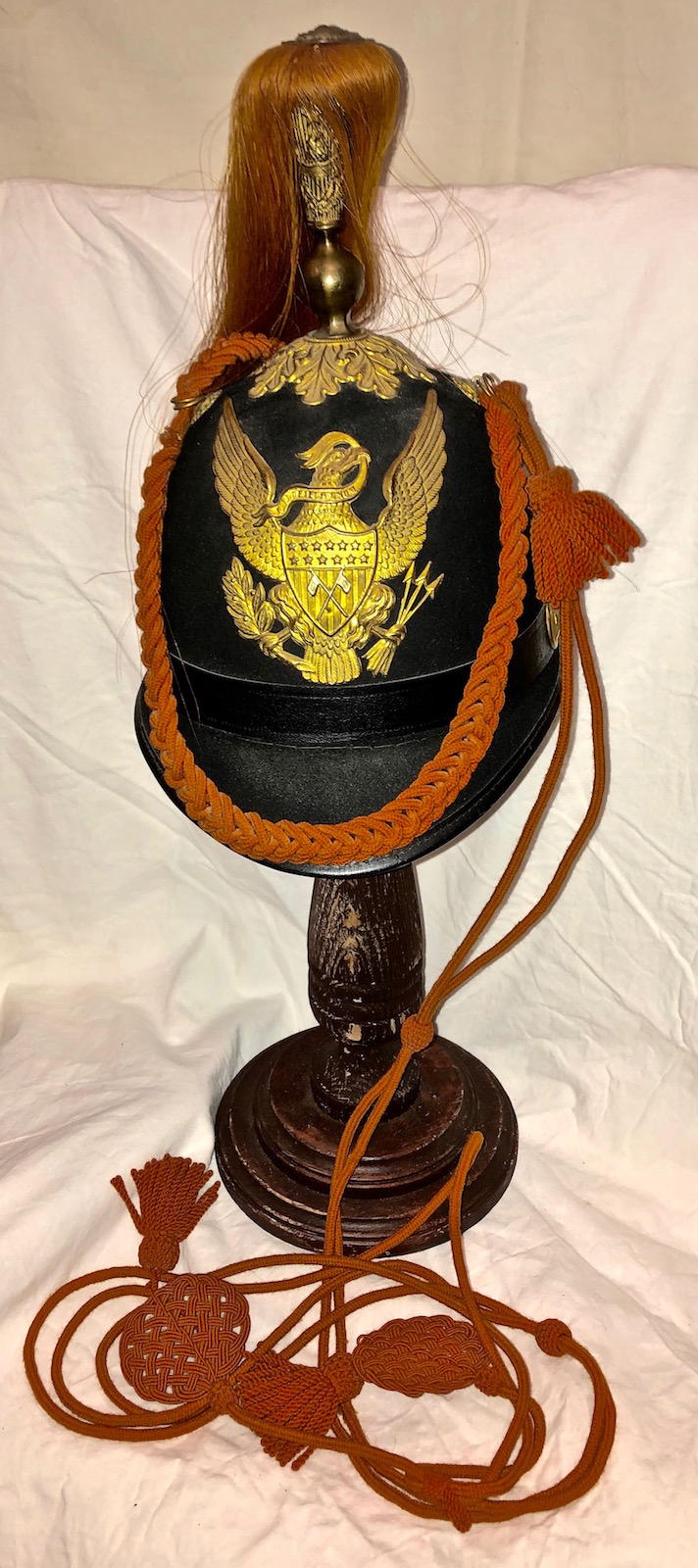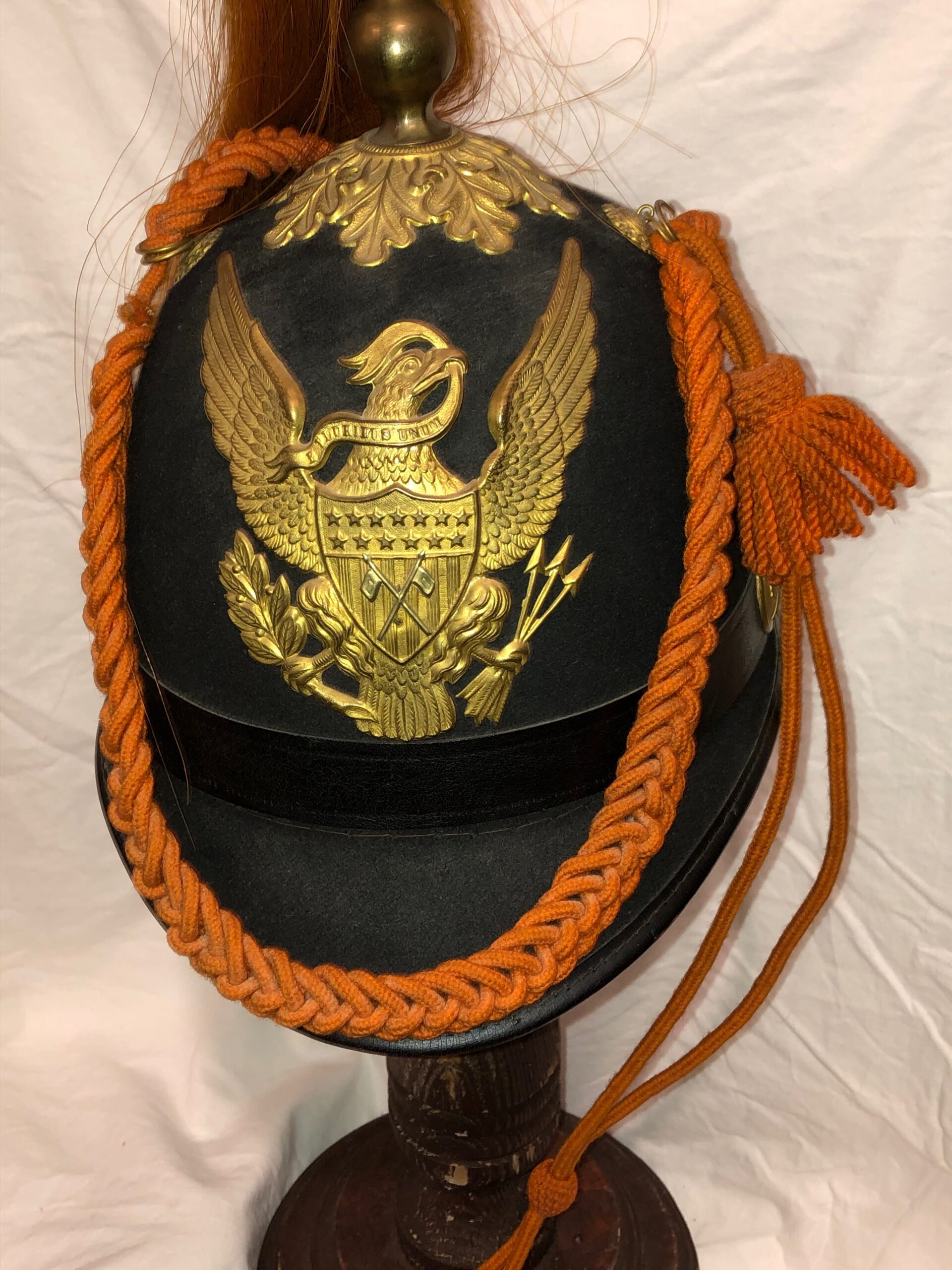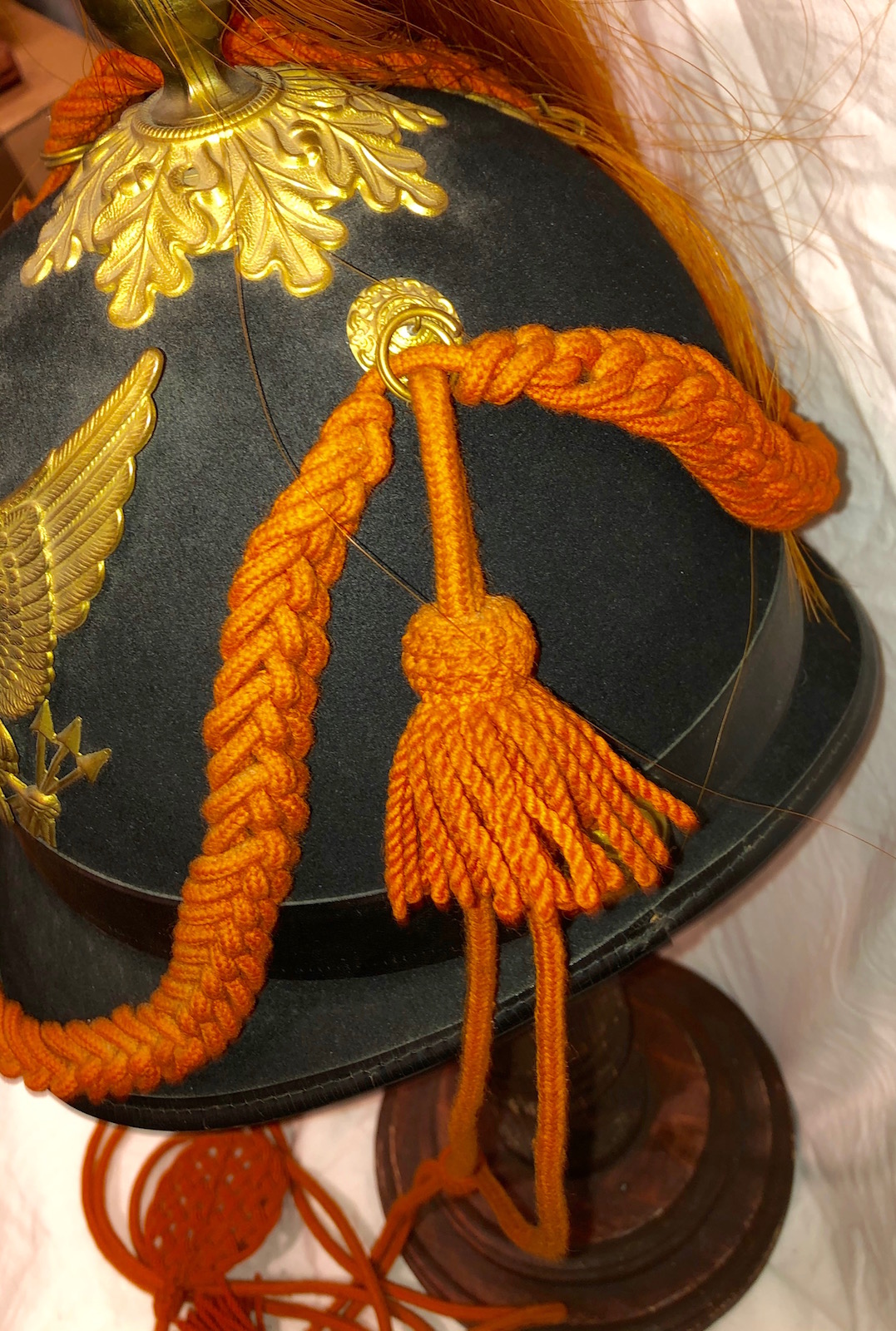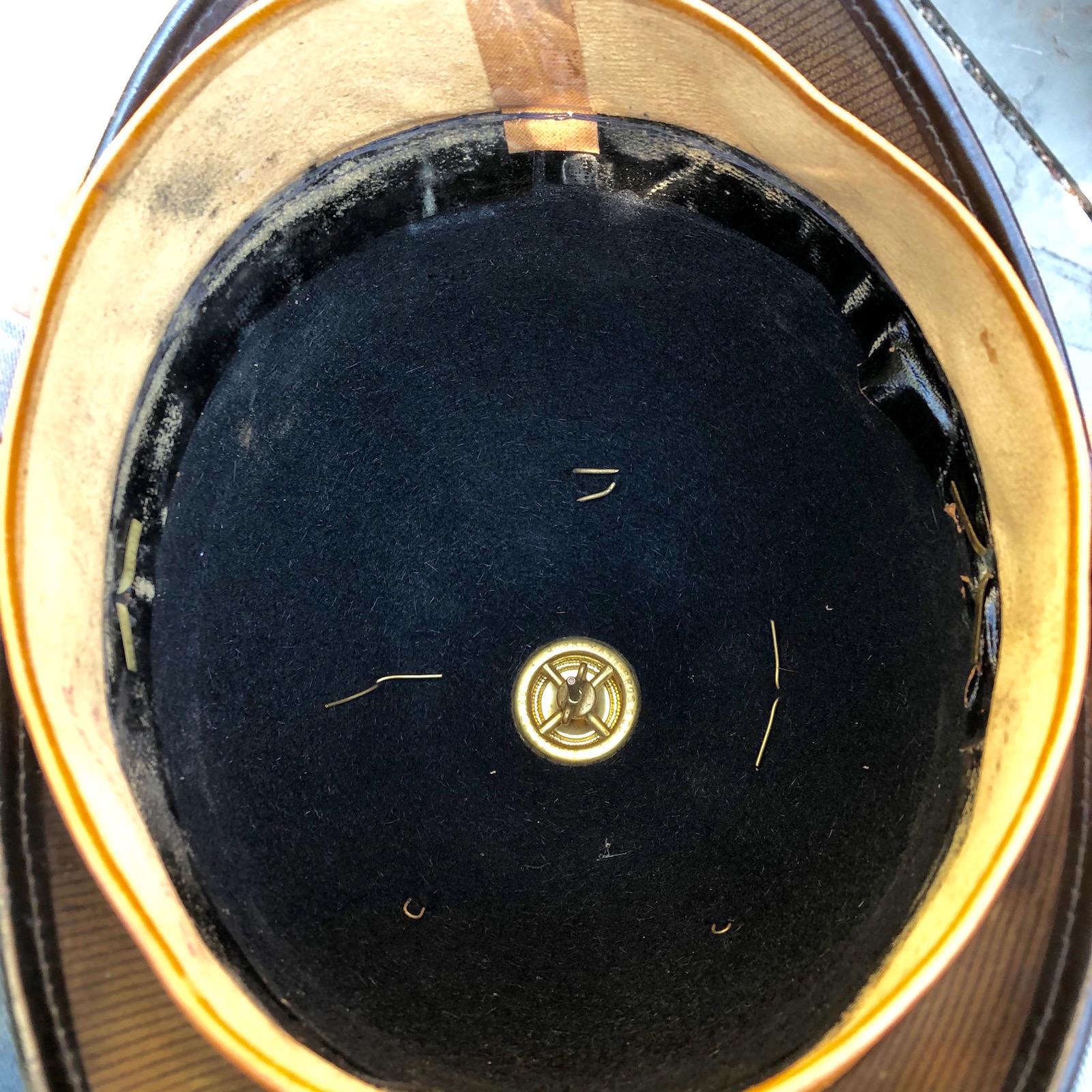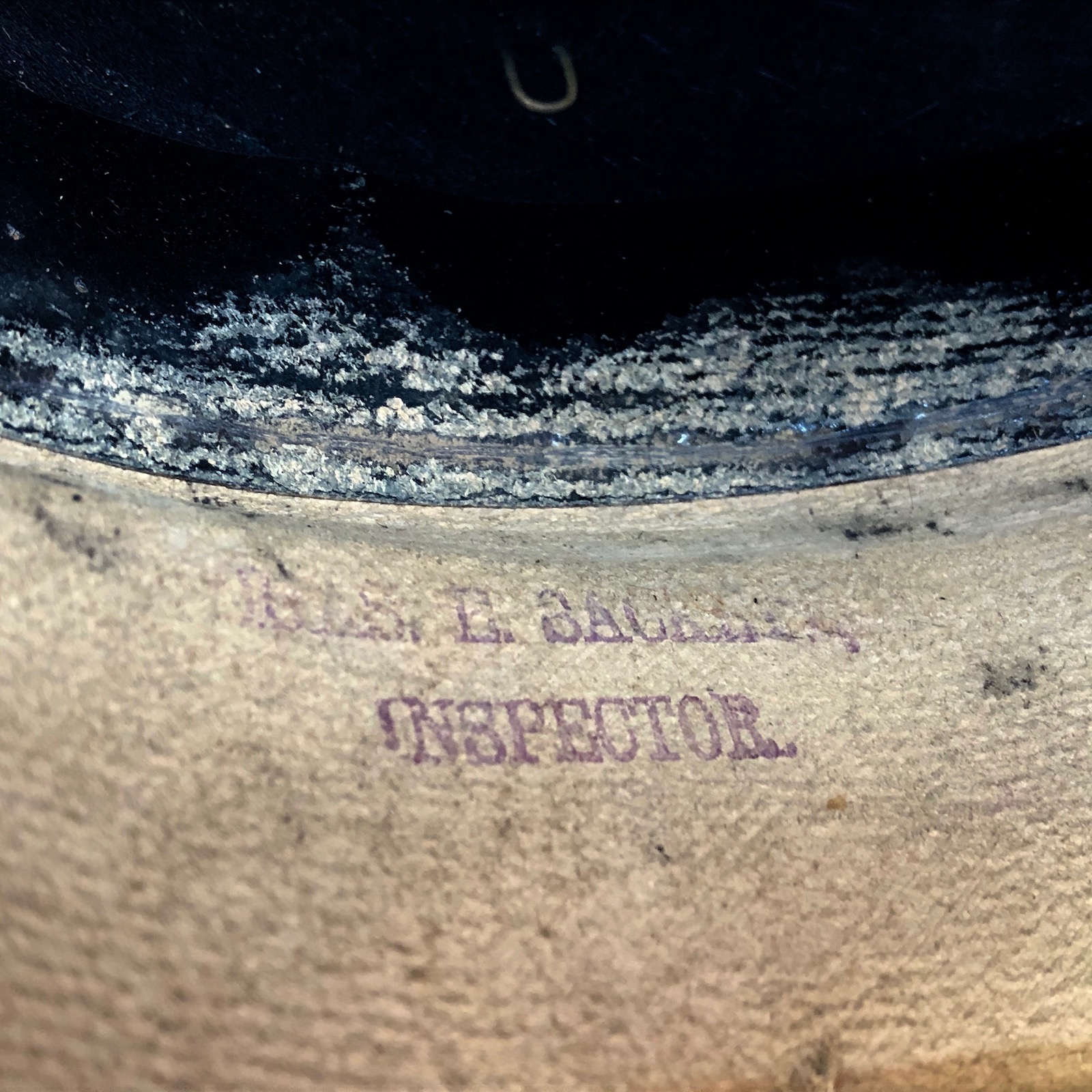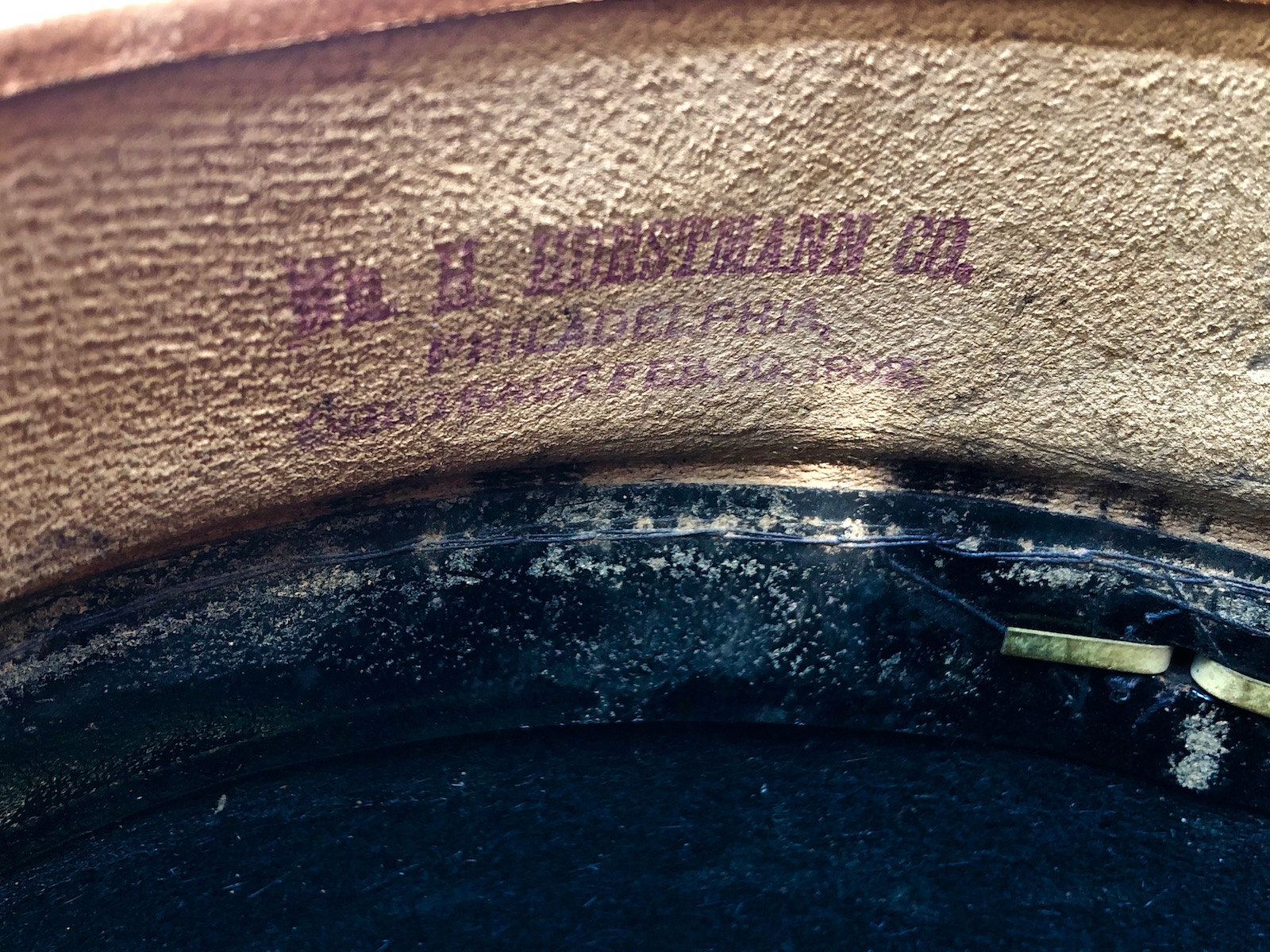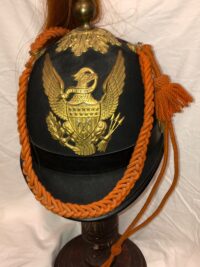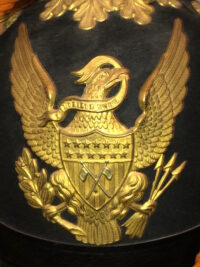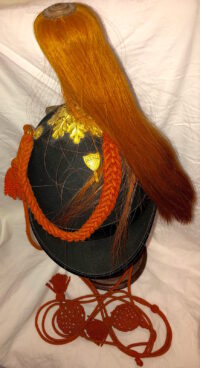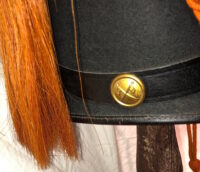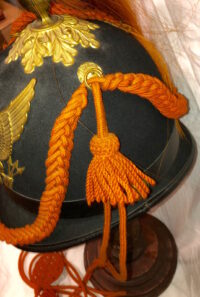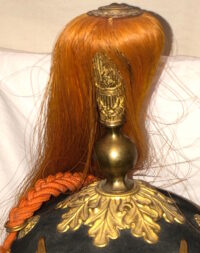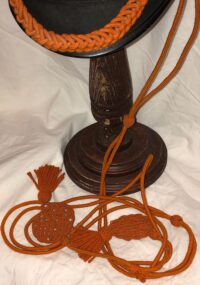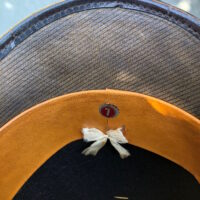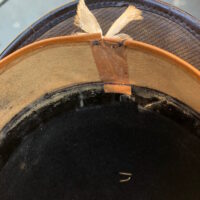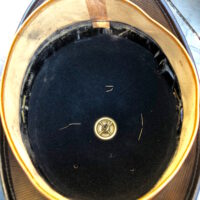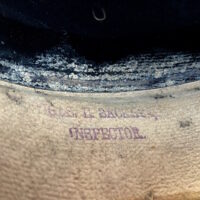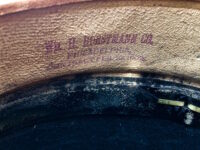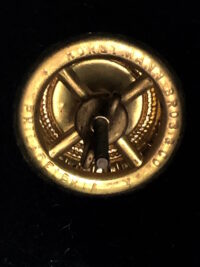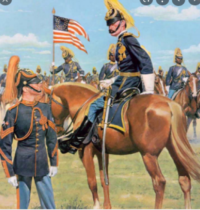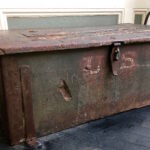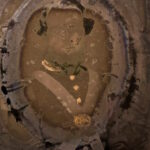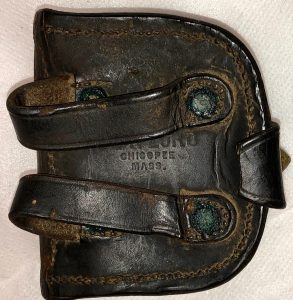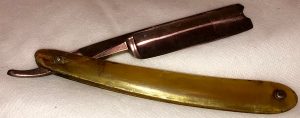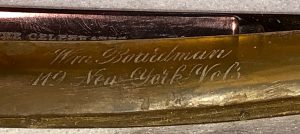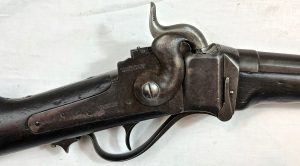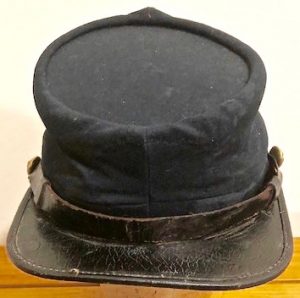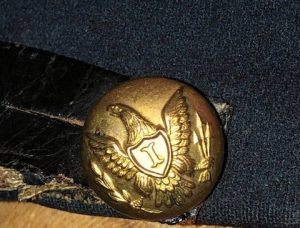U.S. Model 1881 Dress Helmet – Rare Signal Corps – Complete
SOLD
U.S. Model 1881 Dress Helmet – Rare Signal Corps – Complete – This M1881, enlisted man’s, dress helmet remains in superior condition; this helmet was apparently “rigged out” to appear to be a pre-1889 – 1890 Signal Corps helmet, using all original elements to include: the helmet itself; the front, large, sheet brass eagle insignia, with silver crossed signal flags; both stamped brass, side buttons, with crossed signal flags; chin strap with adjustment buckle; two shield, hooked devices for attachment of the aiguillette; original, rare, dark orange aiguillette; original, dark orange, horsehair plume, fixed in place on the top of the hat by the brass, eagle embellished, plume holder. Indicative of a later hat, is the maker’s stamp and date, beneath the sweat band:
“W. H. HORSTMANN CO.
PHILADELPHIA
CONTRACT FEB 20 1902”
The Horstmann Company’s name is also pressed into the brass, circular vent and plume holder in the crown of the helmet. Under the sweatband is also stamped the U.S. Inspector’s mark. The U.S. Army changed the horsehair plume and aiguillette color, in 1890, from the initial orange to black. Regardless, this helmet is a period helmet, with rare insignia and embellishments, and it remains in fine condition.
(Image from U.S. Army Center of Military History)
The American Soldier, 1880 – (From the U.S. Army Center of Military History)
The U.S. Army, which emerged from the Civil War to take the lead in taming the last frontiers of the continental United States, soon became again the frontier Army of the era before the Civil War. The victorious Union Army in 1865 was one of the world’s strongest and most modern, but as the Civil War had radically changed the “old Army,” now postwar Indian combat and exploration changed the wartime Army.
The trend toward a distinctive uniform for the field and another for dress or ceremonial occasions continued. The dress uniform adopted by the Army in 1872 attempted to achieve in appearance the elegance of those of the leading European armies of the day. Typical of this era were those worn on duty in New Mexico about 1880.
Image from the U.S. Army Center of Military History – A sergeant of the Signal Corps is in the left foreground. He is wearing a dark blue, form fitting “Basque” coat with the shorter skirts prescribed for mounted troops. Both his coat and his light blue trousers are trimmed in orange, the branch color of the Signal Corps. The chevrons designating his rank and the diagonal service stripes on his lower sleeve are also orange. On his collar and sleeves he wears crossed signal flags, the insignia of the Signal Corps since its formation in 1861; those on the collar are in gilt, those on the sleeves in red and white embroidery. His cavalry-style black felt helmet, with its orange plume and orange cords, is one of the distinctive features of the Army dress of the period. Adopted in 1872 from the British Army, the helmet was originally only intended for U.S. mounted troops. Its use was later extended to all of the Army and, in the modified form adopted in 1881, was worn until after the turn of the century.
In the center foreground is a captain of the 9th Cavalry in the plain, dark blue coat and light blue trousers worn by all officers. His arm of service is indicated by the yellow plume and gold cords and tassels on his helmet, his gold shoulder knots, and the white gauntlets and black boots of the mounted soldier. His saddlecloth is dark blue with a gold border.
In the background are troopers of the 9th Cavalry in dark blue coats trimmed with yellow, light blue trousers, and black leather belts and carbine slings. The guidon bearer carries the stars and stripes swallow-tailed guidon adopted after the outbreak of the Civil War to replace the red and white cavalry flag then in use.
Model 1881 Dress Helmet
Contributed by David L. Velleux
The Model 1881 Dress Helmet was worn only for full dress events. The helmet evolved from the earlier Model 1872 helmets worn only by the Cavalry, Light Artillery and Signal Corps. In 1881, the new helmet design was adopted for use by all enlisted troops and for officers of the Infantry, Cavalry and Artillery. (General and Staff officers continued to wear a chapeau de bras, as they had for many years…) For enlisted troops, the helmet was made of black felt, while officers could buy a helmet of black cloth over a cork or felt base. Atop the helmet of all mounted troops is a brass plume holder, resting on a brass base having an oak leaf and acorns motif, while the plume holder itself is engraved with an eagle and star. For enlisted men, a thin rod with two circular plates at the top clamps the base of the horsehair plume and rests atop the plume holder, while officers had a similar device to let the plume appear like it was fountain sprung from their heads . The plume’s color depended on the branch of service the soldier was in: white for mounted Infantry officers, red for Artillery and yellow for Cavalry.
The Arms of the United States forms the large insignia on the helmet’s face. Again, depending on the branch of service, one of four different eagle designs formed the insignia. Enlisted troops in branches other than the “Big Three” wore the general services eagle, while dismounted officers from another corps wore either an Infantry or an Artillery plate. For all Infantry, Artillery and Cavalry personnel, a small white metal numeral of the assigned regiment is affixed by small wires to the shield of the eagle plate. Other corps had a small device to signify their assigned branch. For all mounted troops, the helmet cord is hung on the helmet from two devices. For enlisted troops, the cord’s color matched that of their branch, while all officers wore a two-piece cord of braided, gilt thread. The cord’s braided bands drape over the front and back of the helmet. The remainder then falls to the left shoulder and gets secured by a slide, goes around both sides of the head and gets secured by another slide, then around both sides of the right arm and gets secured by a third slide, then the two lozenge ends are secured to a button on the frockcoat and simply dangle.
For all officers, a brass chain chinstrap hangs from two corps-faced buttons with hooks on them. All dismounted officers of Infantry and Heavy Artillery wore the same helmet and base plate, but with a plain brass spike on top. Those officers also wore the brass chain chinstrap. It was draped across the helmet’s face, from a shield hook on the helmet’s upper right back to the left helmet button, when not being used. Enlisted troops had a simple leather band for a chin strap, with two corps-faced buttons on the sides.


